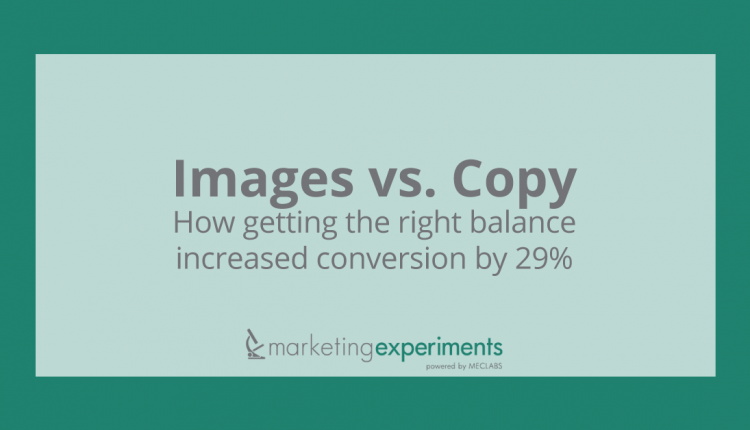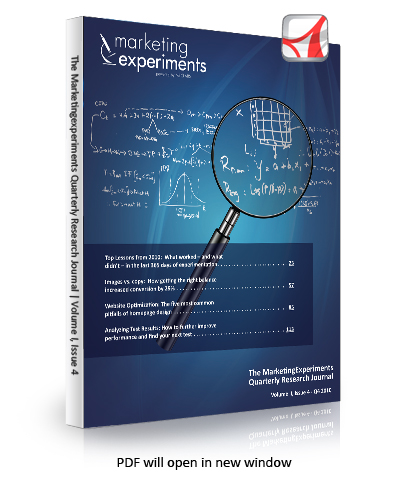When it comes to choosing an image for a web page, most marketers and designers rely on gut feelings or personal preferences. Few have a concrete way of determining the “what, when and where” of an image. So, in this Web clinic, we revealed new research findings that provide simple tactics for using both images and copy effectively. We discussed three key elements of an effective image, as well as two unique advantages copy has over images. For the first time, we revealed strategies for balancing landing page optimization (LPO) with search engine optimization (SEO).
During the Web clinic, we noted that each element of your page can be measured by two capabilities in regards to the expression of value: Force and Precision. In most cases, images will have the greater potential to communicate value with force, and copy will have the greater potential to communicate value with precision. Therefore, it is not a matter of choosing between images or copy, but rather, the goal is to strategically balance the strengths and weaknesses of both to create the most powerful statement of value.
First, Flint McGlaughlin – Managing Director (CEO) of MECLABS – walked through key points for choosing images that communicate value with the most force. He broke this into three key strengths of using images:
- RELEVANCE – The force of an image increases as the connection between the image and the perceived value becomes clearer. Therefore, marketers must choose images that have a direct implication of value for the actual product or service. For instance, to increase image relevance, marketers should stop using random stock images that communicate little to no value about the offer.
- REALITY – The force of an image increases with its authenticity. Images can bring a realism that reduces the “virtual distance” between an offer’s value and the recipient’s perception of that value. Therefore, choose images that help the visitor see and touch the core value of the product. For instance, showing a family enjoying a roller coaster can provide tangible reality to the purchase of amusement park tickets.
- RELATIVE WEIGHT – The force of an image increases as its relative graphical proportion increases. Used properly, images should draw the natural eye-path of the visitor and thus bring more force to the value communicated by the image. Image weight must be used sparingly, as too many competing graphical elements will only confuse the visitor.
Next, McGlaughlin discussed the strategic advantage copy has over images, in relation to being able to communicate the value proposition with precision. This, he broke into two key capabilities: 1) The ability to include a specific quantifiable details 2) The ability to include a tone that matches the visitor’s motivations. He walked through both of these aspects to illustrate for our audience how marketers can craft effective copy.
Finally, SEO was addressed. How can marketers improve copy and/or images without hurting search rankings? In this section of the presentation, we provided key strategies for balancing conversion objectives (LPO) with organic traffic objectives (SEO). As presented, determining the proper balance is based upon your answer to four simple questions:
- Where does your traffic come from?
- What are the LPO needs and potential impact?
- What contributes most to your SEO ranking?
- Can you measure the impact of your page changes?
To provide real-world examples of the principles taught on this Web clinic, McGlaughlin and the MECLABS Conversion Group team conducted live optimization of audience-submitted web pages.
View the clinic replay, or listen to the audio recording (mp3), to learn how to optimize the design of your homepage.
Download the MarketingExperiments Quarterly Research Journal:
Credits:
Presenters
Flint McGlaughlin
Tony Doty
Nathan Thompson
Writers
Austin McCraw
Daniel Burstein
Technical Production
Austin McCraw
Joelle Parra
Nicole Evans
Additional Contributers
MECLABS Conversion Group





